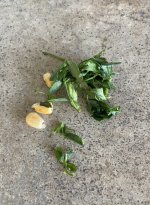We connected on a couple this weekend too. It was too hot to hunt for long, we were back at the truck at about 10:45. I favor pastures with multiple ponds and still carry water with me for both me and the dogs. A little shade here and there is a good thing too. This weekend will probably be the end of chicken season for me.
Clearly I was wrong about PC diet this time of year. The pictures above don't lie and were confirmed by the crop contents of one of Saturday's birds. One bird had an empty crop and the other was full of milo. Just to emphasize how much ground these birds will cover, I'm not even sure where the closest milo field was.
Clearly I was wrong about PC diet this time of year. The pictures above don't lie and were confirmed by the crop contents of one of Saturday's birds. One bird had an empty crop and the other was full of milo. Just to emphasize how much ground these birds will cover, I'm not even sure where the closest milo field was.


